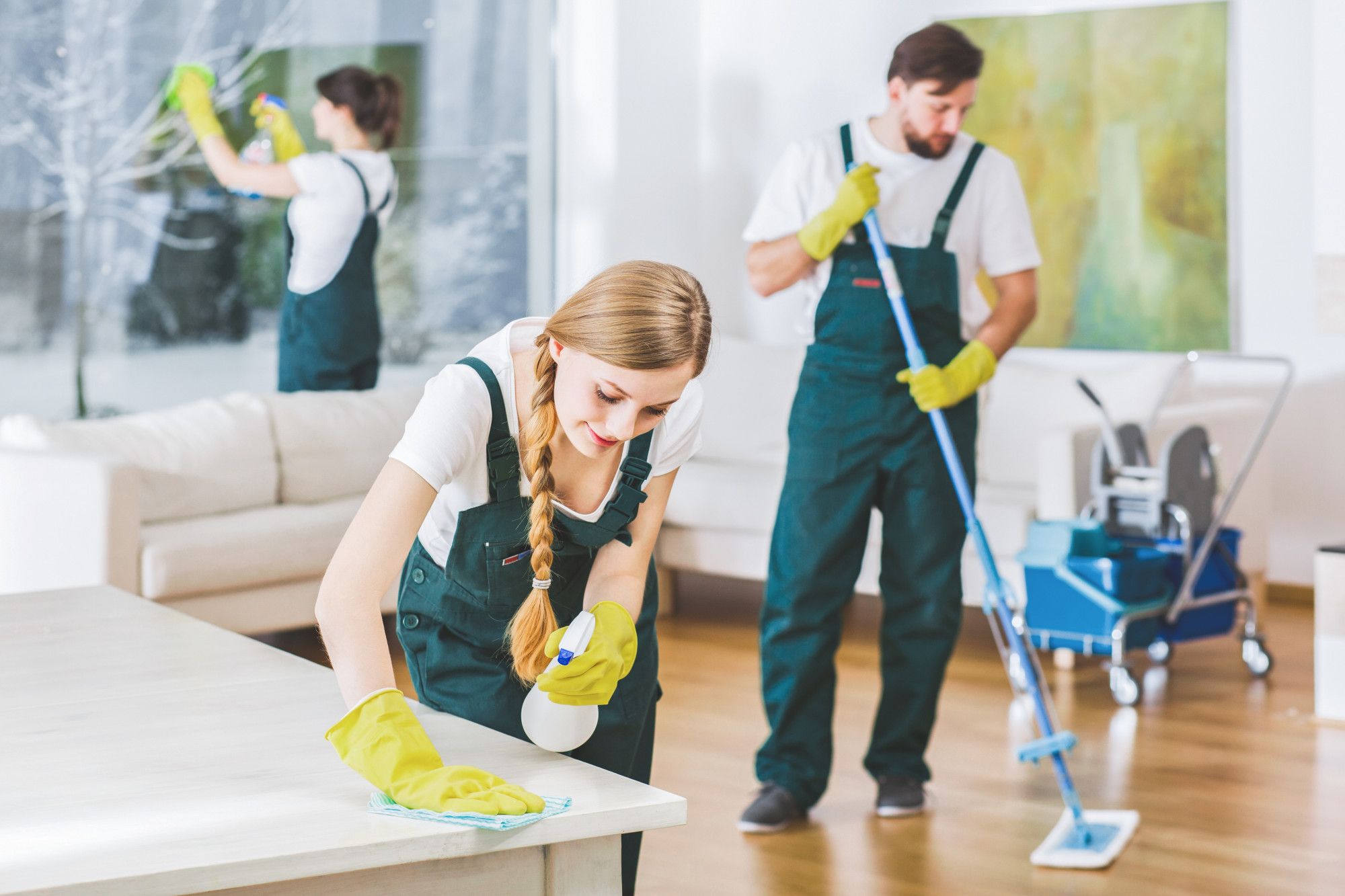The Most Effective Everyday Cleaning Practices: Scrub the Surfaces, Vacuum Carpets, and Keep Clutter away
Wiki Article
Understanding the Requirement for Extensively Sanitizing and Disinfecting Frequently Touched Surface Areas in High-Traffic Locations
In the realm of public wellness and safety, the careful sanitation and sanitization of frequently touched surface areas in high-traffic locations stand as critical procedures in preventing the spread of damaging microorganisms. The relevance of this practice extends far past plain cleanliness, delving right into the world of disease prevention and neighborhood health. By exploring the various aspects of surface area sanitation, from the risks connected with ignoring cleansing protocols to the effective techniques that can be employed, a more clear understanding arises of the important duty these techniques play in safeguarding public health. As we navigate this discussion, it ends up being obvious that the effects of thorough surface disinfection reverberate not only within the boundaries of a specific environment but also resonate on a broader scale, impacting the health and safety of people throughout varied public settings.Significance of Surface Sanitation
Highlighting the comprehensive disinfection of high-traffic surface areas is essential in maintaining a sanitary environment and protecting against the spread of dangerous microorganisms. High-touch surface areas such as door manages, light switches, elevator switches, and counter tops work as reproducing premises for viruses and microorganisms. Routine sanitation of these surfaces is essential to lower the danger of contamination and transmission of illnesses.By carrying out a durable disinfection procedure, institutions and organizations can create a much safer environment for workers, site visitors, and customers. Proper surface sanitation not just mitigates the spread of contagious illness yet also instills confidence in the sanitation and safety and security of the premises. This proactive technique shows a dedication to wellness and wellness, which is particularly essential in high-traffic locations where the chance of exposure to microorganisms is increased.
Additionally, surface area sanitation plays an essential function in general infection control approaches. Incorporated with hand health practices, wearing masks, and maintaining physical distancing, comprehensive disinfection of high-touch surfaces forms an extensive protection versus the transmission of dangerous bacteria. Focusing on surface disinfection is a necessary part of an all natural strategy to wellness and safety and security in common areas.
Dangers of Ignoring Cleaning Practices
Overlooking extensive disinfection of high-traffic surfaces significantly heightens the threat of viral and microbial contamination, presenting a major risk to the health and safety of people frequenting these spaces. Failing to carry out appropriate cleaning techniques can bring about the build-up and spread of hazardous pathogens, including bacteria and infections, on regularly touched surface areas such as doorknobs, handrails, lift buttons, and countertops.
Additionally, ignoring the importance of comprehensive cleansing not only compromises the health of people but additionally weakens efforts to keep a clean and sanitary environment. It is crucial to identify the importance of correct disinfection methods in stopping the spread of infections and safeguarding public health and wellness.
Effective Sanitation Methods
To preserve optimal tidiness and lower the danger of contamination on high-traffic surface areas, employing reliable disinfection techniques is essential. One of one of the most efficient and common sanitation methods is utilizing chemical anti-bacterials. These items can vary in stamina and make-up, with some targeting specific microorganisms like microorganisms or viruses. It is critical to follow the maker's guidelines for proper dilution, get in touch with time, and ventilation when utilizing chemical anti-bacterials to guarantee their effectiveness - Clear Out Any Clutter.An additional effective technique is the click here for more info use of UV-C light. UV-C light has been revealed to be effective in killing a large variety of microbes by interrupting their DNA framework, hence stopping them from reproducing. Nonetheless, it is vital to use UV-C light properly, ensuring that the correct strength and direct exposure time are put on accomplish the preferred disinfection results.
Furthermore, employing vapor cleaning as a sanitation technique can be highly reliable, particularly on surface areas that are heat-resistant. Heavy steam can penetrate porous surface areas and kill microorganisms, viruses, and various other microorganisms effectively. When utilizing steam cleaning, it is important to make sure that the surface gets to the required temperature for a sufficient amount of time to assure proper sanitation.
Effect On Public Health And Wellness
The maintenance of high requirements of sanitation and disinfection on high-traffic surfaces plays a crucial function in guarding public health. Often touched surface areas in areas with high step, such as doorknobs, hand rails, lift buttons, and washroom centers, function as reproducing premises for harmful pathogens. Stopping working to appropriately disinfect these surfaces can cause the rapid spread of infectious illness within areas. By implementing extensive sanitation methods, the risk of transmission of viruses, germs, and other bacteria can be dramatically lowered.In high-traffic locations like airports, colleges, healthcare facilities, and public transportation systems, the impact of strenuous disinfection procedures can not be downplayed. Focusing on the sanitization of regularly touched surface areas is a proactive strategy to promoting public health and wellness and enhancing the safety and security of individuals in common areas.
Executing Normal Cleaning Up Methods
Immediately instituting and sticking to a consistent routine of cleansing procedures is paramount for preserving the cleanliness and security of high-traffic surface areas. Regular cleansing protocols are necessary in protecting against the accumulation of bacteria and pathogens on often touched surface areas, particularly in locations with high foot traffic. By carrying out an organized method to cleansing, companies can efficiently minimize the threat of disease transmission and produce a much healthier environment for employees, clients, and the general public.To establish an effective cleansing timetable, it is crucial to determine high-traffic locations that call for constant attention. These areas may consist of doorknobs, hand rails, lift buttons, washroom facilities, and shared devices. Executing a routine cleaning program that targets these surface areas numerous times a day can significantly decrease the spread of damaging germs and infections.
In addition, making use of appropriate cleaning agents and disinfectants is essential to guaranteeing that surfaces are completely sterilized. Routine training of cleaning up personnel on appropriate cleaning techniques and the relevance of adherence to the cleansing routine is additionally More about the author essential in keeping a sanitary atmosphere. By prioritizing constant cleaning protocols, companies can advertise the wellness and wellness of individuals who interact with these high-traffic surface areas.

Verdict
In final thought, it is important to prioritize comprehensive sanitation and sanitization of regularly touched surfaces in high-traffic areas to protect against the spread of unsafe virus and preserve public health. It is essential to recognize the importance of keeping clean surfaces in high-traffic locations to guarantee the health of the neighborhood.In the realm of public wellness and security, the meticulous sanitation and sanitization of frequently touched surface areas in high-traffic areas stand as extremely important procedures in avoiding the spread of harmful microorganisms. By exploring the numerous facets of original site surface area disinfection, from the threats linked with neglecting cleaning methods to the efficient techniques that can be used, a clearer understanding arises of the important duty these practices play in guarding public health.In addition, employing heavy steam cleansing as a disinfection approach can be highly efficient, specifically on surfaces that are heat-resistant. When utilizing vapor cleaning, it is crucial to guarantee that the surface area reaches the needed temperature level for a sufficient amount of time to assure correct disinfection.
In final thought, it is crucial to prioritize detailed disinfection and sanitization of frequently touched surfaces in high-traffic locations to protect against the spread of hazardous microorganisms and keep public wellness.
Report this wiki page